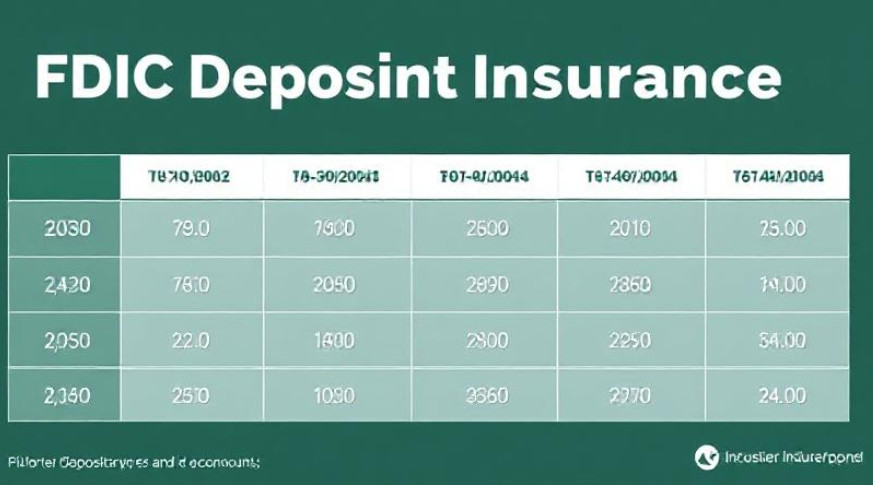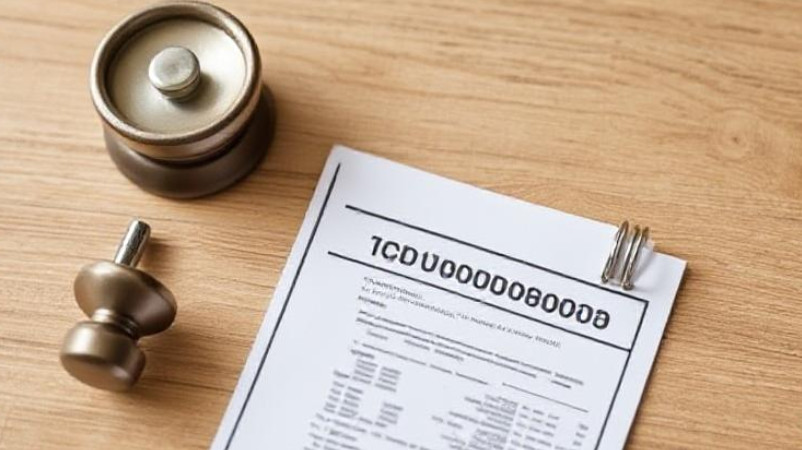Whether you’re a frequent user of banking services or not, the term FDIC insurance has likely crossed your path. The Federal Deposit Insurance Corporation, established in 1933, oversees FDIC insurance, providing protection for deposits in checking, savings, and CD accounts within its member banks. In the event of a member bank’s failure, the FDIC steps in to reimburse each depositor up to $250,000 per account, ensuring the safety of their funds.
However, FDIC is not the sole player in the deposit insurance realm. Enter the Depositors Insurance Fund (DIF), a lesser-known but impactful insurance scheme specifically catering to funds deposited with Massachusetts-chartered savings banks.
Origins & History of the Depositors Insurance Fund (DIF)
The DIF has its roots intertwined with the financial landscape of Massachusetts. Unlike the Deposit Insurance Fund utilized by the FDIC, DIF is a localized scheme offering supplementary protection for deposits in Massachusetts-chartered savings banks.
Understanding Savings Banks
Savings banks, the primary beneficiaries of DIF, specialize in receiving savings deposits and utilizing these funds for various credit vehicles such as mortgages, personal loans, and business credit. Many smaller community banks are structured as savings banks, and DIF membership is obligatory for them. Therefore, if your bank is a savings bank based in Massachusetts, your deposits are automatically covered by DIF insurance.
Depositors Insurance Fund Bank: Safeguarding Deposits
Any savings bank chartered in Massachusetts falls under the umbrella of a Depositors Insurance Fund bank. DIF steps in to protect deposits in Massachusetts-chartered savings banks that exceed the coverage provided by FDIC insurance, which caps at $250,000 per account.
Combining the forces of FDIC and DIF, depositors in Massachusetts-chartered banks enjoy robust insurance protections. Notably, during significant economic downturns like the savings and loan crisis in the late 1980s/early 1990s and the financial crisis of the late 2000s, DIF proved more than sufficient in covering depositors’ losses. According to DIF, no depositor has ever lost a penny in a bank insured by both FDIC and DIF.
Maximum Coverage Amount for a Depositors Insurance Fund Bank
DIF provides a unique feature – there’s no maximum insured amount per account. In theory, depositors’ funds have unlimited protection. However, practical considerations come into play, as most banks set maximum deposit limits, typically ranging from $1 million to $10 million per account. Thus, while the theoretical coverage is boundless, the practical upper limit is determined by individual bank policies.
In conclusion, DIF stands as a testament to the commitment of safeguarding the financial interests of depositors in Massachusetts-chartered savings banks, offering a complementary layer of protection to the widely recognized FDIC insurance.
The Genesis and Functionality of the Massachusetts Depositors Insurance Fund (DIF)
In the wake of a series of Massachusetts-chartered bank failures in 1932, the state legislature took decisive action, giving birth to the Mutual Savings Central Fund (MSCF), the precursor to the Massachusetts Depositors Insurance Fund (DIF). Simultaneously, another legislative act brought the Co-operative Central Bank into existence, providing deposit insurance for credit unions and cooperative banks based in Massachusetts.
Originally designed as the first state-sanctioned deposit insurance fund in the United States, MSCF aimed to deliver complete deposit protection for individual and business depositors affected by the failures of member banks. Following the establishment of the FDIC, which initially reimbursed deposits up to $5,000, MSCF underwent modifications. Its charter evolved to extend coverage beyond the limits set by the FDIC, and at some point, MSCF adopted the name DIF.
Key Features of DIF Insurance Coverage
1. Location and Residency
DIF insurance extends its protective umbrella solely over deposits with Massachusetts-chartered savings banks. While it doesn’t discriminate based on residency, covering individuals from any state, your savings bank must be Massachusetts-chartered for DIF to apply. This flexibility becomes particularly significant in the case of online banks based in Massachusetts, attracting customers from various states.
2. No Added Cost
DIF insurance comes without a price tag for depositors. There are no fees or surcharges to participate in the program; it is a complimentary benefit for all account holders.
3. No Application Requirements
Similar to FDIC insurance, DIF coverage is automatically bestowed upon all new depositors the moment they open an account with a member bank. There’s no need for a separate application or additional information beyond what’s required for standard account opening procedures.
4. No Coverage for Investment Products
DIF insurance, like its FDIC counterpart, specifically focuses on deposit accounts such as checking, savings, CDs, and money market accounts. It doesn’t extend coverage to investment products like mutual funds, annuities, stocks, or bonds.
DIF Members, Funding, Assets & Oversight
DIF’s composition of member banks is dynamic, influenced by the emergence, failure, or alteration of banks and their charters. As of 2023, the Depositors Insurance Fund encompasses a diverse array of banks, including but not limited to:
• Abington Bank
• Lee Bank
• Adams Community Bank
• The Lowell Five Cent Savings Bank
• Athol Savings Bank
• MountainOne Bank
• Avidia Bank
• Monson Savings Bank
• BankProv
• Marblehead Bank
• Bank of Canton
• MutualOne Bank
• Bank of Easton
• Martha’s Vineyard Savings Bank
• BankFive
• Methuen Co-operative Bank
• BankGloucester
• Main Street Bank
• BayCoast Bank
• Mechanics Cooperative Bank
• Bay State Savings Bank
• Needham Bank
• Bluestone Bank
• North Cambridge Co-operative Bank
• Canton Co-operative Bank
• Newburyport Bank
• Commonwealth Cooperative Bank
• North Brookfield Savings Bank
• Charles River Bank
• North Easton Savings Bank
• The Cooperative Bank
• North Shore Bank
• Country Bank
• OneLocal Bank
• Cornerstone Bank
• Pentucket Bank
• Cape Ann Savings Bank
• PeoplesBank
• The Cooperative Bank of Cape Cod
• Pittsfield Bank & Trust
• Coastal Heritage Bank
• Rollstone Bank & Trust
• Clinton Savings Bank
• Reading Co-operative Bank
• Dean Bank
• Savers Bank
• Dedham Institution for Savings
• Seamen’s Bank
• East Cambridge Savings Bank
• South Shore Bank
• East Boston Savings Bank
• Stoneham Bank
• Eagle Bank
• Stoughton Co-operative Bank
• Easthampton Savings Bank
• UniBank
• Florence Bank
• The Village Bank
• Fidelity Bank
• Washington Savings Bank
• Greenfield Savings Bank
• Watertown Savings Bank
• Greenfield Cooperative Bank
• Webster Five
• Haverhill Bank
• Winchester Savings Bank
• Hometown Bank
• Wrentham Cooperative Bank
• Hampden Bank
• Walpole Co-operative Bank
• Institution for Savings
• Wakefield Co-operative Bank
As the financial landscape continues to evolve, the DIF stands as a testament to Massachusetts’ commitment to protecting depositors and ensuring the resilience of its banking system.
Funding Mechanisms, Investments, and Oversight of the Massachusetts Depositors Insurance Fund (DIF)
DIF Funding Mechanisms & Investments:
The Massachusetts Depositors Insurance Fund (DIF) operates as a private organization, distinct from its legislative creation, and relies on funding from its member banks. Member banks are obligated to make annual assessments, or payments, to the DIF general fund. The assessments are calculated based on the total value of their customers’ deposits.
In the 2022 fiscal year, DIF collected a total of $5.43 million in assessments, showcasing an increase from $4.74 million in fiscal year 2021. While individual member banks’ assessments are not disclosed, the funds gathered contribute to the robustness of the DIF.
DIF prudently invests these assessed funds in three main classes of securities, emphasizing the safety of government-backed instruments. The investment portfolio includes short- and long-term U.S. treasuries, debt obligations from U.S. government-sponsored enterprises like Fannie Mae and Freddie Mac, as well as privately issued mortgage- and asset-backed securities. This strategy ensures the bulk of DIF’s assets are in obligations guaranteed by the Federal Government.
Given the fluctuations in the value and returns of these securities, coupled with variable expenses, the net income of the fund experiences variations from year to year. The total available deposit insurance fund for DIF amounted to $486.83 million in 2022 and $508.43 million in 2021. In comparison, DIF’s insured excess deposits, representing funds above the FDIC limit, were $28.57 billion in 2022 and $27.14 billion in 2021. This means DIF covered 1.70% of depositors’ excess funds in 2022 and 1.87% in 2021.
Massachusetts DIF Supervision & Member Oversight:
DIF operates under the oversight of the Massachusetts Division of Banks, a state regulatory authority. To ensure transparency and accountability, DIF undergoes independent audits conducted by third-party auditors.
The day-to-day operations are managed by a president and executive team, who report periodically to a 13-member board comprising executives from DIF member banks and other significant employers with a Massachusetts presence.
While DIF lacks the authority to independently examine its member banks’ finances, it mandates quarterly financial statements from each bank. Collaborating with regulatory bodies like the Massachusetts Division of Banks, FDIC, and the Federal Reserve, which possess the legal authority to audit Massachusetts-based banks, DIF relies on their reports to assess the financial health of member banks.
Bank Failure and Transition:
In the unfortunate event of a member bank’s failure, DIF records an expected liability on its balance sheet. If a member bank does fail, DIF steps in, as required by law, to reimburse depositors for any funds lost above the FDIC insurance limit.
When a DIF member bank faces bankruptcy, its membership typically lapses if it is purchased out of bankruptcy by another DIF member or undergoes recapitalization. Even if solvent, a DIF member loses its membership when its assets are acquired by a non-DIF member bank, particularly one headquartered outside Massachusetts, and it subsequently abandons its Massachusetts charter.
Conclusion:
Massachusetts’ commitment to depositors’ protection, exemplified by the DIF, extends beyond its borders. With an ever-mobile population and the prevalence of online banking, the DIF’s influence is felt by individuals across the country. Whether one is considering relocation, exploring online banking options, or advocating for enhanced deposit protections, the legacy of DIF and FDIC insurance stands as a crucial aspect of financial security, rooted in the historic consumer protection measures of the 1930s.






